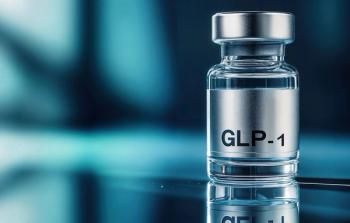Helping Small Biotechs & Startups Navigate Complexities and Accelerate Time-to-Market
Key Takeaways
- Small biotech companies face challenges in process development, including high costs, regulatory complexities, and shareholder expectations, impacting long-term viability.
- Strategic partnerships with CDMOs provide regulatory expertise, define quality target product profiles, and establish robust manufacturing processes.
With ever-increasing costs to put a single molecule on the market, the pressure to reach clinical milestones quickly and efficiently often drives a focus on short-term gains that can create significant long-term liabilities, jeopardizing the path to commercial viability.
In today’s rapidly evolving life sciences market, small biotechnology companies and startups face complex challenges and decisions, particularly when it comes to the capital-intensive world of process development and manufacturing. These challenges can include a lack of specialized in-house expertise, the high cost of development and equipment, and the complexities of navigating the ever-evolving regulatory environment (or landscape), all of which must be balanced against the expectations of shareholders.
With ever-increasing costs to put a single molecule on the market estimated between $300 million and over $2 billion, the pressure to reach clinical milestones quickly and efficiently often drives a focus on short-term gains that can create significant long-term liabilities, jeopardizing the path to commercial viability.
Consider for example a biotech company developing antibody-drug conjugates (ADCs), an innovative therapy for cancers. Developers might prioritize a liquid formulation to accelerate Phase 1 clinical trials, as it’s often faster to develop than a lyophilized (freeze-dried) formulation. However, this decision can be a strategic misstep. Most commercially successful ADCs are lyophilized due to their inherent instability in liquid form. As such, a developer may have to redo earlier chemistry, manufacturing, and controls (CMC) studies to switch to a lyophilized formulation enabling enhanced stability and extended shelf-life for ADCs. What seems to save time at the outset can necessitate a complete process re-engineering later—a costly and time-consuming undertaking that may compromise a commercial launch.
Similarly, a company might try to preserve cash flow by onboarding a less expensive contact materials product supplier. One underestimated yet crucial factor may be the quality of materials used throughout manufacturing, storage, and transportation, for example vial type for a lyophilized product. As such, thorough studies designed to well define quality target product profile (QTPP) complying with global regulatory requirements is essential for product optimization. While it may appear to be a favorable financial decision, the risk may be to impact the stability of the product or fail a regulatory submission and restart some product development work. The consequence is a costly and time-consuming revalidation of the manufacturing process, which ultimately will delay getting medicines to patients who need them.
To avoid these pitfalls, emerging biotechs must adopt a "think big, start smart" mindset. A successful path to commercialization is not just about advancing to the next milestone; it’s about strategically building a foundation for a successful, long-term commercial product. Let’s consider how contract development and manufacturing organizations (CDMOs) can help reduce risk and accelerate time-to-market in a competitive global environment in the following keyways:
1. Plan with the end in mind
Success begins with a clear vision of the final product. This requires a deep understanding of the regulatory landscape to ensure successful market entry and adoption.
- Regulatory Foresight: The regulatory landscape is often a minefield full of complexities requiring knowledge of the specific requirements for the molecule, especially with new drug modalities, as regulatory requirements for submissions are still being updated. Failure to comply can result in clinical holds, rejection of filings, and significant delays for approval.
CDMOs either employ or partner with dedicated regulatory affairs teams who are skilled in preparing documentation, assisting with submissions, and guiding clients through the complex regulatory process efficiently. Their experience with an extensive number of modalities and regulatory agencies can help streamline the process and reduce the risk of regulatory hurdles, helping to manage timelines and costs.
2. Define a quality target product profile
A company should define the critical quality attributes (CQAs) for a new drug using a systematic, risk-based approachknown as quality by design (QbD). While this method may involve additional investment upfront, it mitigates the risk of a complete overhaul later.
Define the Quality Target Product Profile (QTPP): A key component of a QbD approach is defining the QTPP and process stabilizing the active molecule. The QTPP is a summary of the desired quality characteristics, considering its safety, efficacy, and clinical use and is comprised of multiple CQAs and critical process parameters (CPPs), which can be influenced by the environmental factors described above. For example, typical CQAs for ADC products include the drug-to-antibody ratio (DAR), ADC potency, aggregation level, and stability during storage and transportation as these directly impact the drug's safety and efficacy. This profile is the foundation for all subsequent development.
CDMOs are strategic partners who can guide biotech companies through the essential steps of QbD. Their extensive experience with a variety of products and regulatory landscapes allows them to proactively identify potential risks and establish a robust, scalable manufacturing process from the very beginning.From the outset, a CDMO partner can help biotech companies and startups maximize yields, minimize loss, and facilitate scalability, helping drug developers avoid costly mistakes that can cause years of delays.
3. Establish a robust manufacturing and process strategy
Once a company has defined the product’s quality attributes, the next step is to establish a manufacturing process that can consistently achieve the CQAs.
- Process Development: A crucial, often-underestimated phase, this is where a company defines how a molecule will be formulated, purified, and manufactured. Every step must be meticulously documented and validated to ensure consistency and quality.
- Facility and Environmental Considerations: The manufacturing process is heavily influenced by its environment. For example, when working with cytotoxic agents like the payloads in ADCs, specialized containment and safety protocols are required. Additional considerations must also include the potential for light sensitivity that could compromise product integrity. Manufacturing viral vectors for gene therapies has its own set of unique aseptic handling requirements.
CDMOs provide access to a large, experienced team of scientists, process engineers, analytical chemists, and quality assurance professionals to help companies make the best decisions for process and manufacturing development. This is often more efficient and effective than trying to recruit and retain a comparable in-house team, which can be particularly challenging for a small company. Additionally, most small biotech companies can't afford state-of-the-art labs and equipment necessary for scale up of drug manufacturing. A CDMO can begin developing a scalable manufacturing process early on, ensuring a smooth transition to clinical supply for trials if the drug candidate proves successful.
4. Identify manufacturing resources: In-house vs. strategic partnership
Often in biotech, a major risk is the enormous capital expenditure and length of time required to build and maintain in-house development and manufacturing facilities. This can cost hundreds of millions of dollars, a burden that most companies cannot afford. As such, it’s important for startups and smaller biotechs to consider the most cost-efficient way to develop a new drug without expanding its capabilities unnecessarily.
- Building In-house: This approach offers full control over the manufacturing process and intellectual property and enables a company to leverage personnel and infrastructure over multiple product candidates of the same modality. However, the downsides are significant: heavy upfront capital investment, limited flexibility if a company’s pipeline pivots, and the challenge of recruiting a team with deep, cross-disciplinary expertise in a timely manner.
- Finding a Strategic Partner: Although a partner may seem like a late-stage requirement, an integrated approach to workflow can provide a strategic advantage. An emerging biotech may not have the in-house knowledge to take late-stage manufacturing needs into consideration. However,a CDMO can bring cross-functional expertise to the very beginning of the project, providing a continuity of project management to streamline the development process and accelerate readiness for commercialization. CDMOs also have a large network of vendors making the acquisition of components, equipment, and upstream or downstream services easier, faster and more affordable for small biotech companies before they might even realize they need them to further simplify the manufacturing process.
A partnership can mitigate the need for costly re-engineering and revalidation. CDMOs also prevent unnecessary capital investment in facilities and personnel if a promising drug candidate fails in early clinical development, allowing the company to pivot to other pipeline opportunities without a heavy financial burden. By outsourcing work outside of small companies’ core competencies to CDMOs, biotech companies can avoid massive upfront costs of building and maintaining their own facilities. This conserves capital and allows companies to focus on their unique strengths and competitive advantages.
5. Select the right partner
The right CDMO isn't just a service provider; it's a strategic collaborator. It’s imperative to find a CDMO that will help a company determine the best, most cost-effective path for a new drug, rather than executing a development plan handed over by the company.
- Beyond the Transactional: Look for a CDMO that will proactively offer suggestions for process improvement and treat a smaller-scale project with the same level of attention as a much larger one. A small biotech or startup should confirm that their needs won't be deprioritized.
- Global Considerations: In the current global economic and political landscape, a CDMO's location is a critical factor. Tariffs can impact the cost of raw materials and finished drug products, potentially creating supply chain risks and cost inflation. Partnering with a CDMO in a favorable location—one such as Simtra BioPharma Solutions that has both EU and NA facilities—can help mitigate these risks and simplify logistics and distribution.
Choosing a CDMO is a strategic business decision, not just a manufacturing one. By working with a partner who prioritizes their product and aligns with their supply chain goals, a biotech startup can hand off complex production tasks. This frees their team to focus on core activities like research, clinical strategy, business development, and commercialization (go to market strategy). This approach helps early-stage companies meet key manufacturing milestones and build a foundation for long-term profitability.
By embracing this guidance, biotech companies and startups can help transform their initial scientific breakthrough into a sustainable commercial product. A great CDMO partner doesn't just make the product—they help products get to market faster and with less risk.
Newsletter
Lead with insight with the Pharmaceutical Executive newsletter, featuring strategic analysis, leadership trends, and market intelligence for biopharma decision-makers.






